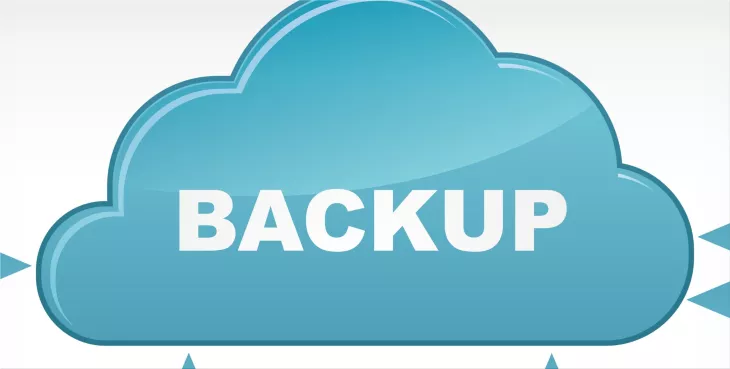Internal information management is increasingly crucial to the efficient running of any organization. Customer management systems, internal work processes, and financial data are just a few examples of information that a company would be unable to run without. Given their significance, they must be kept in a secure location with convenient access.
From this requirement arose the notion of data backup, which entails keeping all of the information that is or may be utilized at any given moment in a technological environment. It can be readily retrieved whenever needed.
The following sections will define backup, explain why this form of data storage is important, and demonstrate how to store saved data.
What exactly is a backup?
In layman's terms, a backup solution is a tool for the continuous, long-term preservation of all of an organization's data, allowing it to be accessed as quickly as needed. It is important to note that a backup storage system operates independently of the other devices used inside the organization, providing a secure and accessible solution even in the event of an unanticipated occurrence that may jeopardize the other devices.
However, the notion of backup does not entail transferring data from one device to another but rather creating a duplicate of it that is safely saved on a different storage media. Obviously, in instances when a significant volume of data cannot be kept on the devices used in everyday operations, backup systems may be used to preserve this information, which can then be retrieved when needed in the future.
Why is it critical to backup?
Although data backup was more discretionary a few years ago, being utilized mostly by major corporations, this information storage method is now essential for each company. The huge data, its value for the organization, and the necessity to centralize information have transformed solutions into genuine requirements. The proper operation of a company is dependent. The following are the primary reasons why you should back up your files:
To avoid unanticipated disasters.
When managing a team with members that create data via their activity, keep in mind that one of the devices on which they operate might fail at any time. As a result, the data, converted into working hours given by workers, could be permanently lost. In addition, the same data loss can occur in the event of an unanticipated occurrence, such as a natural disaster, or in the event of work equipment theft. Furthermore, in the event of a human error, critical data for the firm may be permanently destroyed. Because none of these unanticipated occurrences can be entirely avoided, data backup is the only option that can ensure the safety of all documents.
Document integrity must be ensured.
A data backup can also serve to store precious data in a secure environment devoted to that purpose. Data whose integrity can be ensured by backing up includes historical documents that can no longer be reconstructed, personal data of employees that must be stored securely, and confidential information received from third parties that unauthorized persons must not access. Backing up to a server or other storage media may also be very useful if you want to build an archive to save data collected over a while without fear of it being hacked in any manner or running out of space.
Following a backup, where may the data be stored?
Although big corporations employ specialized storage media to protect their data, this is not the sole data backup method. Any device with data storage technology may, in theory, be utilized as a backup solution. The following are the data storage choices available to you:
Devices used daily.
The first group of devices on which a data backup may be done is those used regularly, such as a PC, laptop, tablet, or even a phone. Even though these devices do not have a big storage capacity and retrieving the data stored on them is slow, they are the most cost-effective option to create a backup. In addition, this approach is recommended for preserving generic papers that do not include private information and would not cause a crisis in the company if they were lost.
Use web hosting or online cloud services.
You may utilize a cloud or hosting service to store your organization's data in a dedicated environment that gives security and rapid access to it. These premium services are supplied by specialized firms that will keep all of your information on dedicated servers. The security and improved accessibility offered by this backup technique is significant since the servers allow remote data download and are active 24 hours a day, save for maintenance times, which will be communicated to you in advance.
The drawback of a cloud or storage service is that it requires a monthly payment, which will rise in proportion to the quantity of data you wish to keep. So, in the long term, a cloud service is not a cost-effective choice for a company that stores a large volume of data.
Use your servers and storage systems.
This storage option was formerly chosen by large firms with a massive volume of data to store, but it is currently becoming more common among medium and small businesses. Owning a server or storage system, such as a Network Attached Storage, will offer you full control over your data, allowing you to set up a unique configuration and build your implementation methods, despite the initial expense. It will enable you to create a backup, gain access to data, or have data automatically deleted after a set amount of time. In addition, it provides you with a variety of options for usage, such as hosting corporate websites or hosting or storing sites and third-party data for a charge. Regardless of the purchase price, a well-managed server may be a worthwhile investment.
What is the best way to build a backup?
As I previously stated, a backup is a duplicate of all of your company's information stored in a storage environment devoted to this purpose. However, to fully comprehend how to back up and save data in a manner that suits your needs and tastes, you must first examine two critical problems, which we will explain below:
Type of backup you want.
Although the ultimate aim of a backup is to create a backup of all data, the method by which this is accomplished varies. The following are the most common forms of backups:
A complete backup
As the name implies, a full backup is making a backup of all data in an organization. It's often utilized for the initial backup.
Backup in stages
Because running a full backup every time new files are created would require a lot of hardware, incremental backup was created. This backup consists solely of copying and adding material that has been produced or updated lately to the existing archive.
Differential backup
This form of backup is identical to incremental backups, except that all produced files will be transferred when the full backup is completed. Although this approach consumes more storage device resources, it provides for quick data recovery in an emergency.
Where will the backup be kept?
A data backup may be performed on any device with data storage technology. The device you choose is based on the size of your backup, the amount of money you have to spend on this operation, and how quickly you want your data recovered.
How often do you have to back up your data?
You must specify a backup time for each type of data, even though there is no predefined time for doing so. The following are the key categories, along with how often each should be backed up:
Everyday
Data that cannot be lost must be backed up daily. Email files, phone systems, customer management systems, and network settings are examples of these. It's a good idea to add other essential data in your daily backup if you think there's anything else you can't afford to lose.
Weekly
These are critical corporate data, but they use many resources and would take too much time to back up daily. Data connected with websites and general files, such as media, are included in this category.
Every two weeks
Important files that are updated regularly should be backed up every two weeks. This section contains information on the company's pay and finances.
How do you maintain the integrity of a data backup?
Backing up your files is a precaution that will allow you to access them if the files on your main device are lost or stolen. However, to ensure that you have access to your stored data in the event of an unanticipated occurrence, you must take several precautions to protect the data backed up. Here are a few examples:
-Verify that your backup was completed successfully and that it is operational. Check the archive regularly to see if the files are still useful;
-Verify that the backup data is complete before proceeding. If you find that numerous files are missing, we suggest creating a complete backup as soon as possible.
-Check to see if the storage media is reliable. Check that the devices you've backed up are operating at optimal levels, and learn more about the backup provider you've chosen.
Backing up all of your company's information will prevent you from data loss and allow you to focus on your daily tasks while knowing that all of your critical files are safe. So choose the best backup option for your needs and keep your company secure!

























